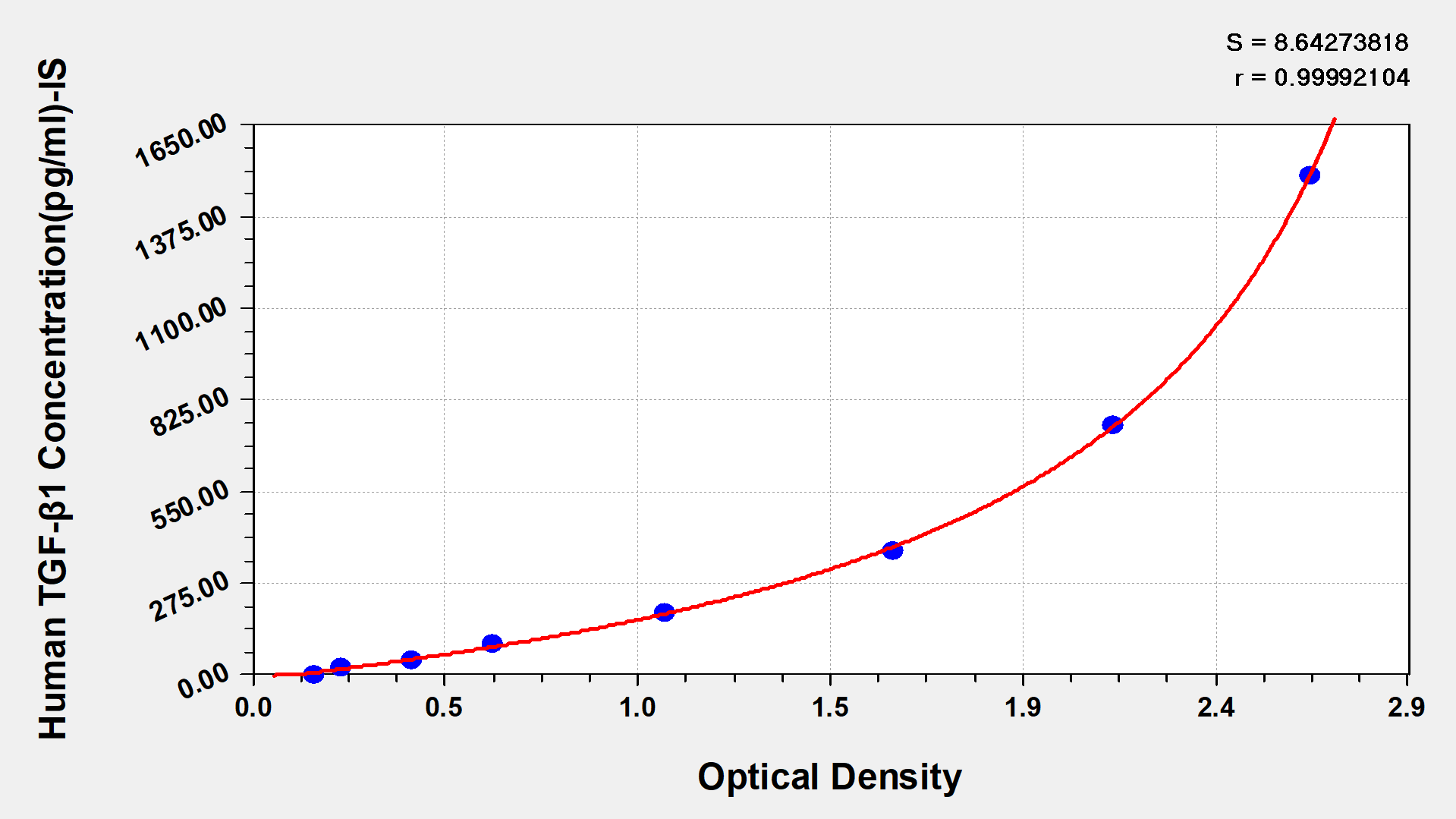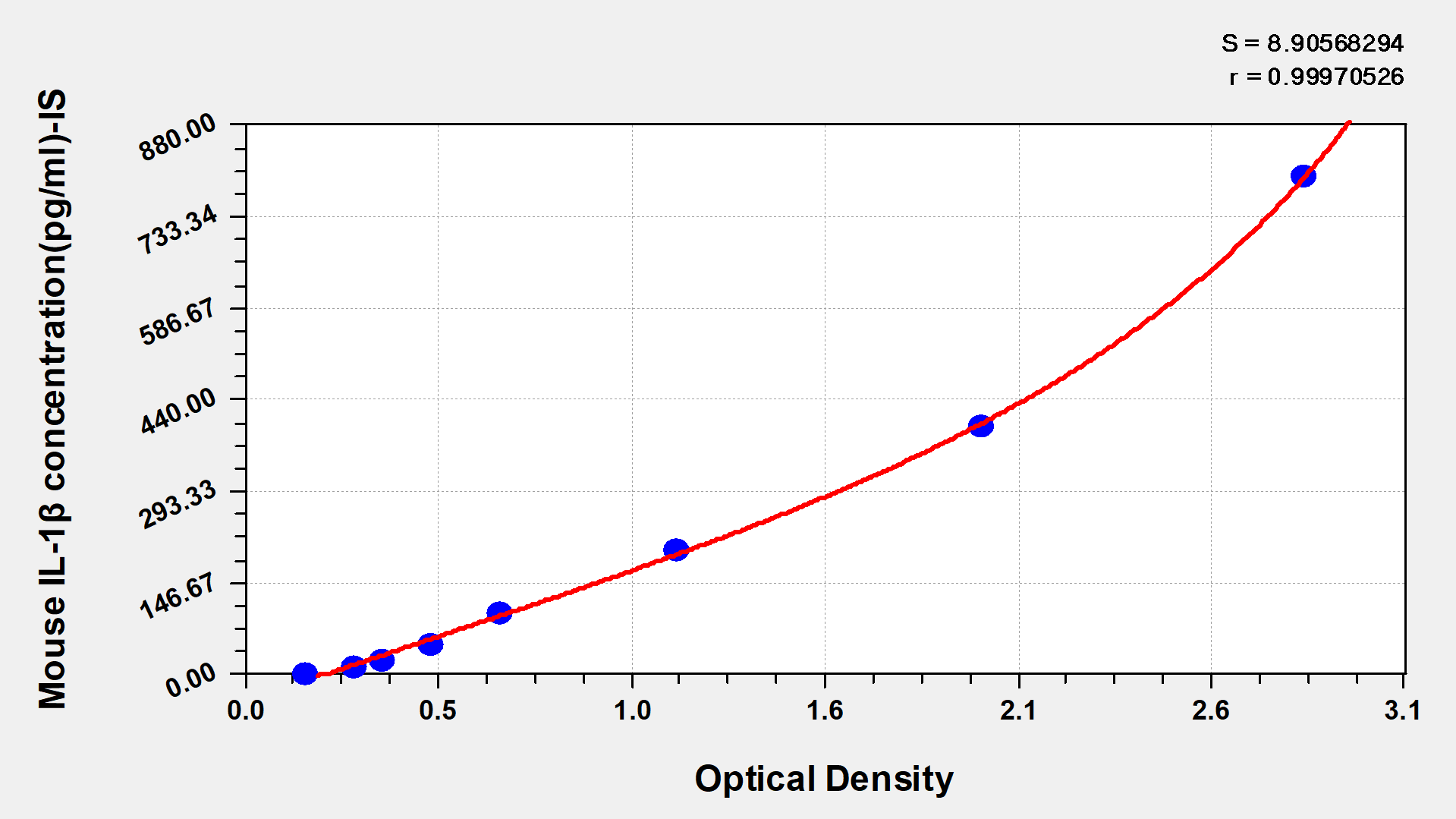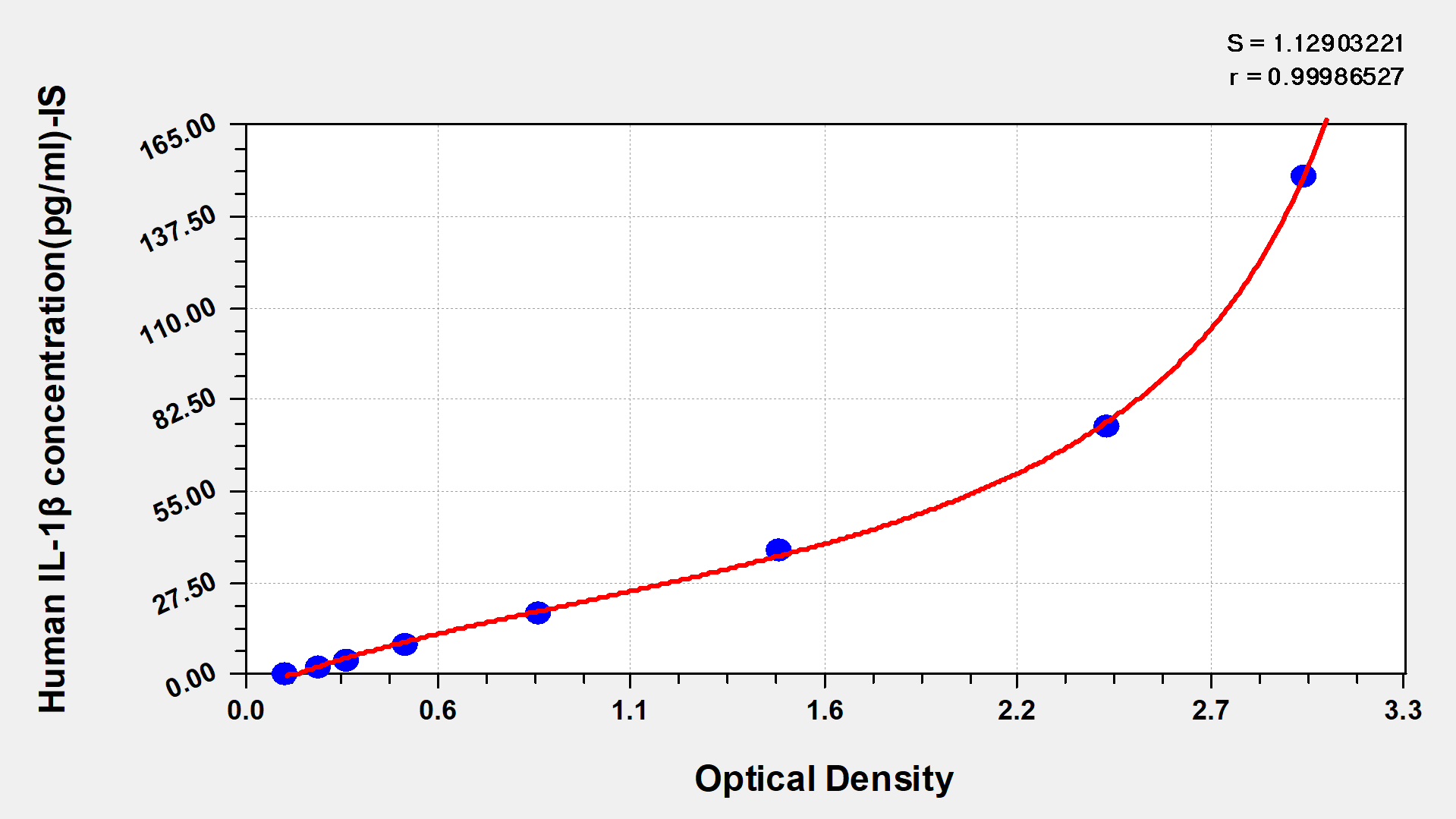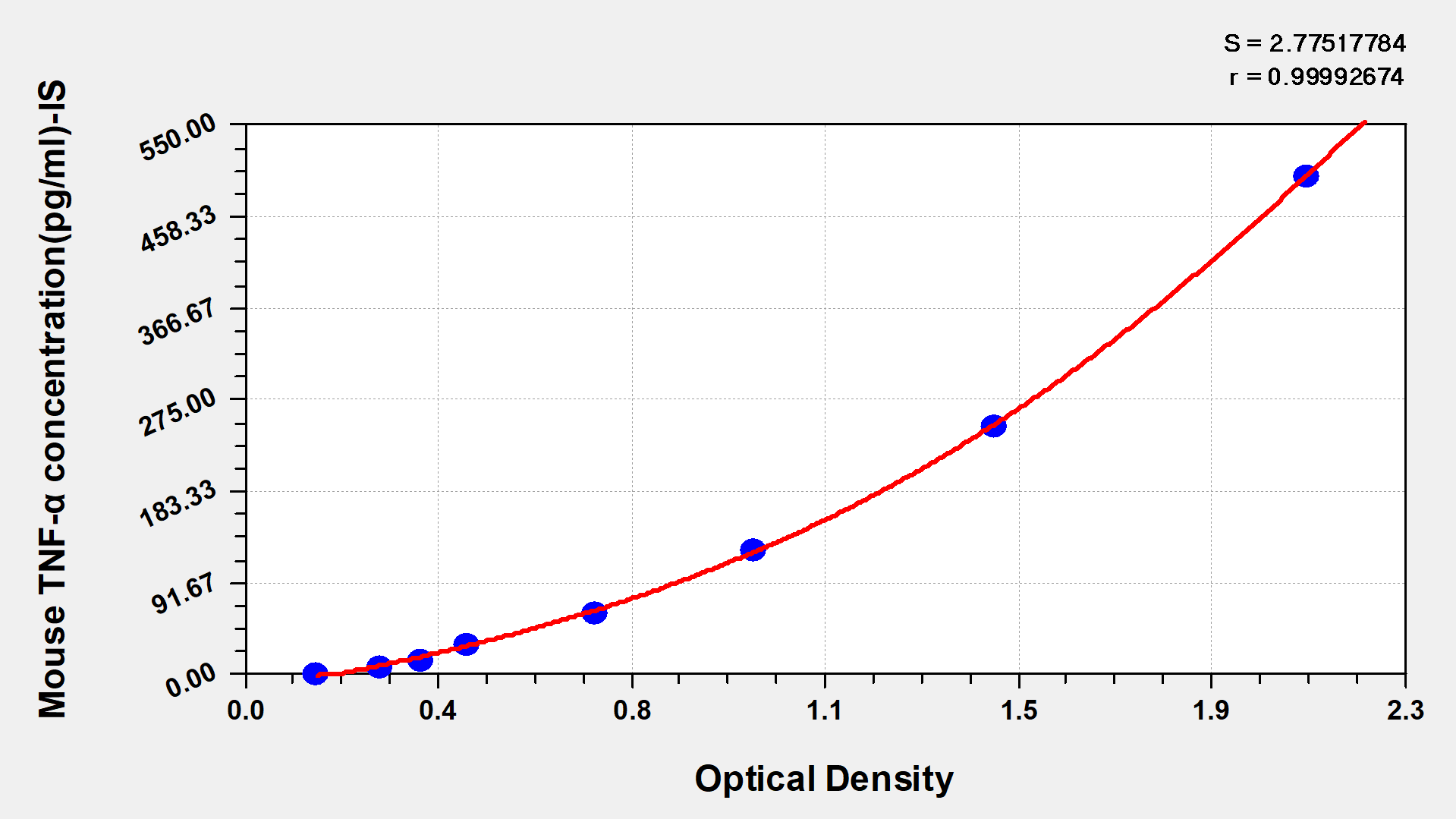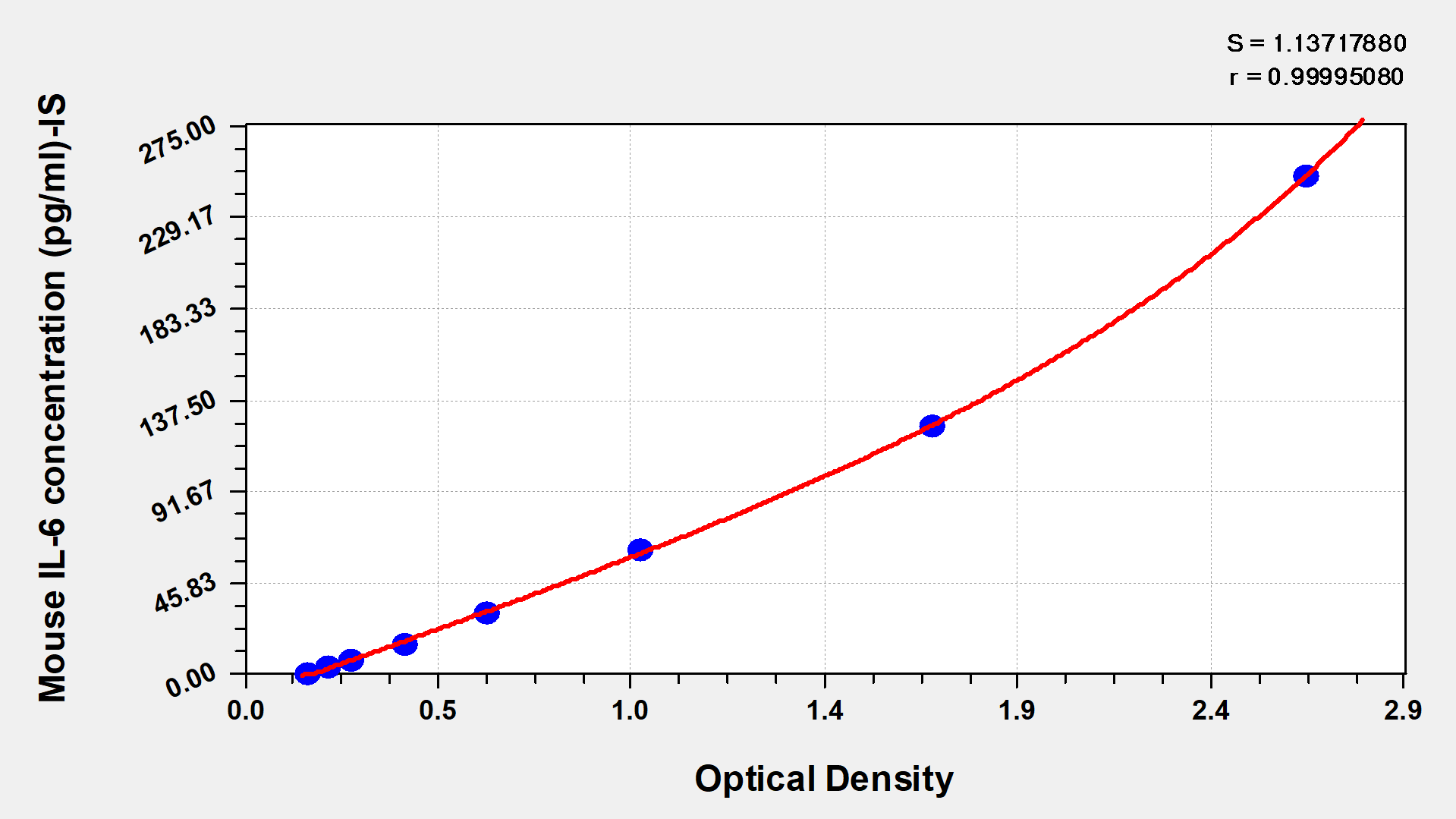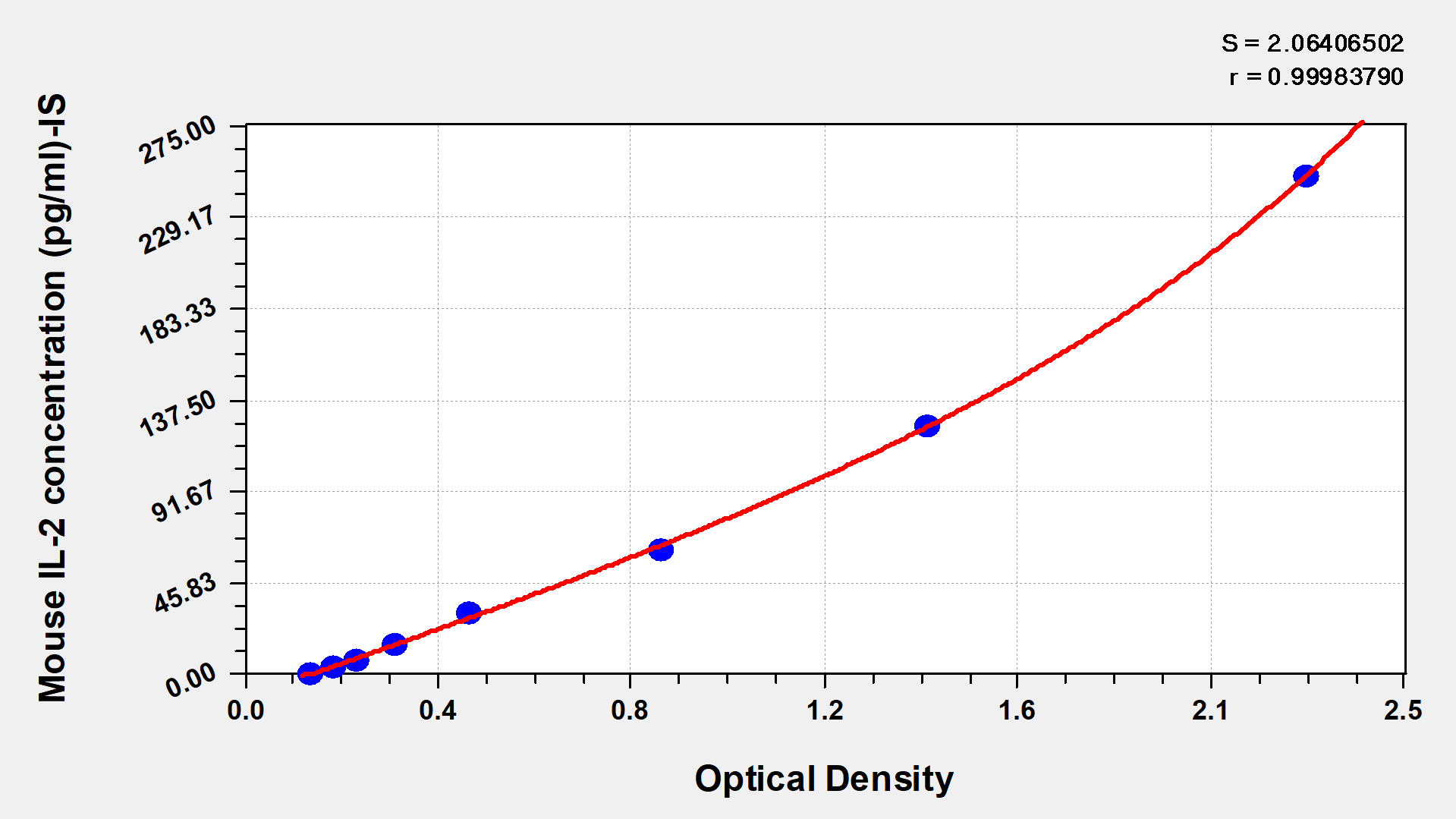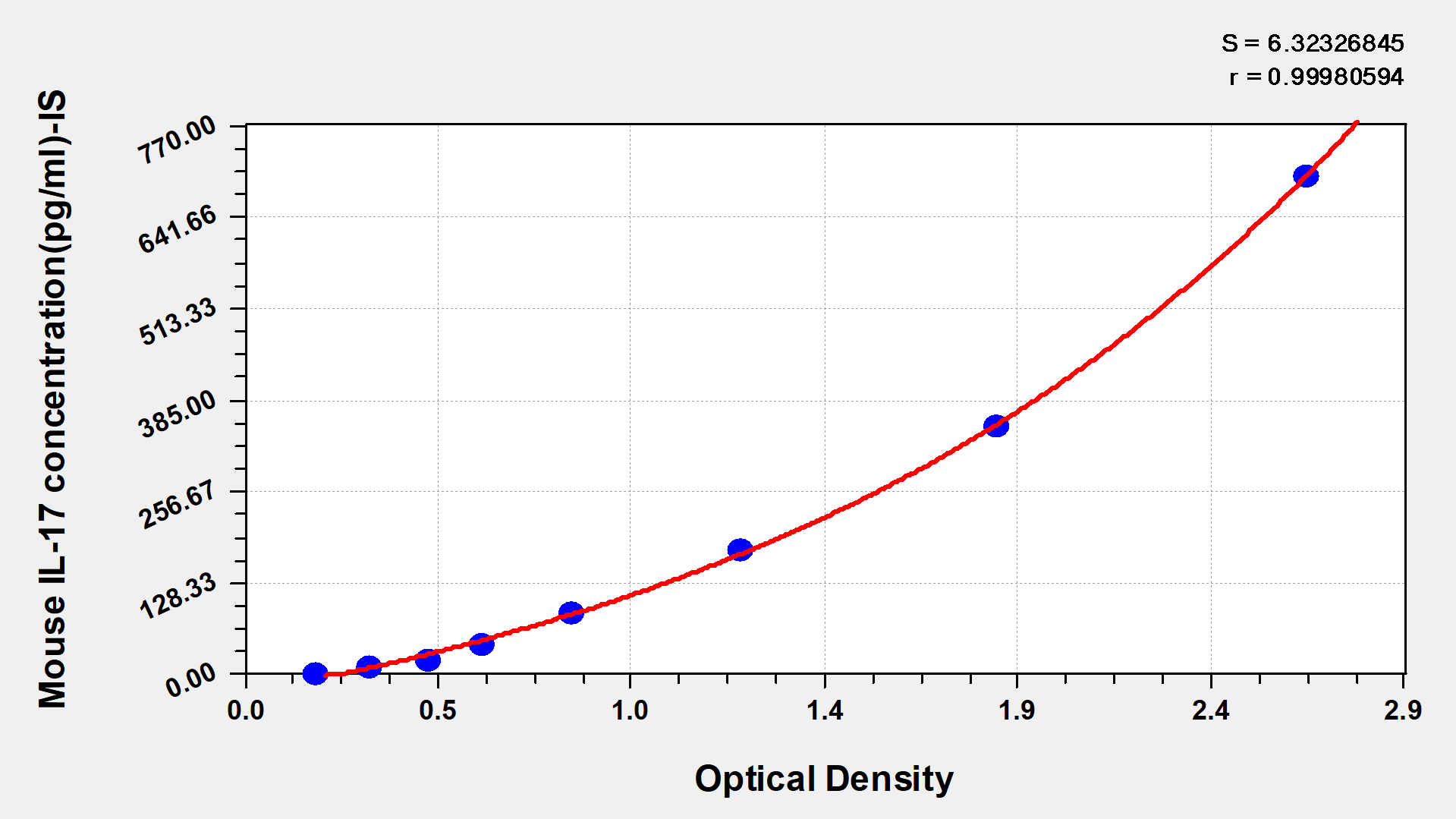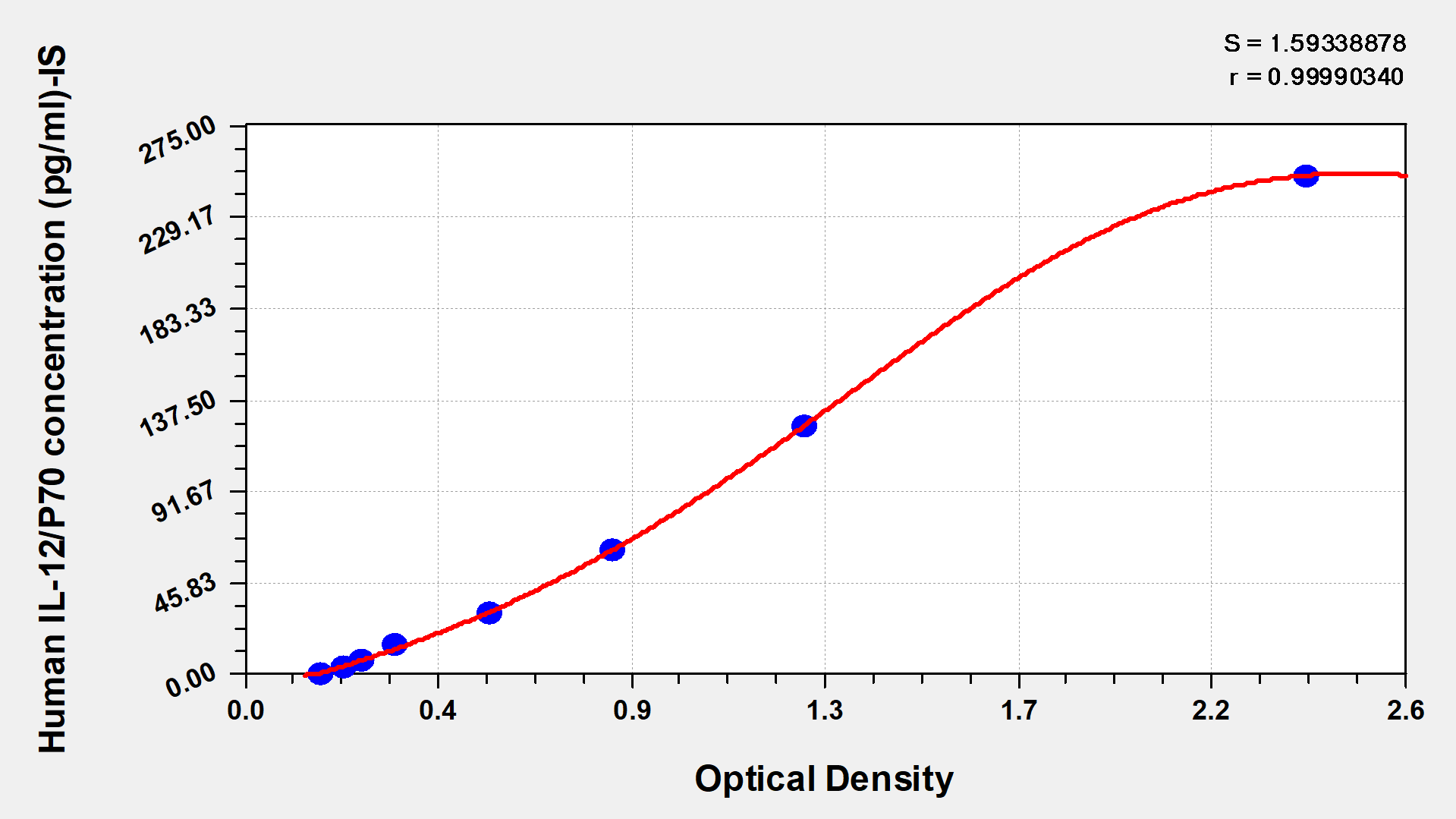Mouse eosinophil chemotactic factor,ECF ELISA Kit
-
中文名称:小鼠嗜酸粒细胞趋化因子(ECF)酶联免疫试剂盒
-
货号:CSB-E04536m
-
规格:96T/48T
-
价格:¥3200/¥2500
-
其他:
产品详情
-
产品描述:CUSABIO小鼠嗜酸粒细胞趋化因子(ECF)酶联免疫检测试剂盒(货号:CSB-E04536m),基于双抗体夹心法原理实现定量分析,适用于血清、血浆及组织匀浆样本中ECF蛋白的检测,检测灵敏度范围为15.6 pg/mL至1000 pg/mL。ECF作为趋化因子家族成员,在过敏反应、哮喘及寄生虫感染等病理过程中通过介导嗜酸性粒细胞定向迁移参与免疫调控,是研究炎症机制的重要靶点。该试剂盒可广泛应用于基础科研领域,例如构建小鼠疾病模型(如气道高反应性、嗜酸粒细胞增多症)时动态监测ECF表达水平,或用于评估抗炎药物对嗜酸粒细胞募集的影响。试剂盒包含预包被特异性抗体的微孔板及标准品、检测抗体等核心组分,实验流程标准化,支持实验室高效完成样本中目标蛋白的精准定量分析。
-
别名:C-C motif chemokine 11 ELISA Kit; CCL 11 ELISA Kit; CCL11 ELISA Kit; CCL11_HUMAN ELISA Kit; chemokine (C-C motif) ligand 11 ELISA Kit; Chemokine C C motif ligand 11 ELISA Kit; Chemokine CC Motif Ligand 11 ELISA Kit; Chemokine ligand 11 ELISA Kit; Eosinophil chemotactic protein ELISA Kit; Eotaxin ELISA Kit; eotaxin-1 ELISA Kit; MGC22554 ELISA Kit; SCYA 11 ELISA Kit; SCYA11 ELISA Kit; Small inducible cytokine A11 ELISA Kit; Small inducible cytokine subfamily A (Cys Cys) member 11 ELISA Kit; small inducible cytokine subfamily A (Cys-Cys); member 11 (eotaxin) ELISA Kit; Small inducible cytokine subfamily A member 11 ELISA Kit; Small-inducible cytokine A11 ELISA Kit
-
缩写:
-
Uniprot No.:
-
种属:Mus musculus (Mouse)
-
样本类型:serum, plasma, tissue homogenates
-
检测范围:15.6 pg/mL-1000 pg/mL
-
灵敏度:7.8 pg/mL
-
反应时间:1-5h
-
样本体积:50-100ul
-
检测波长:450 nm
-
研究领域:Immunology
-
测定原理:quantitative
-
测定方法:Sandwich
-
数据处理:
-
货期:3-5 working days
相关产品
靶点详情
-
功能:In response to the presence of allergens, this protein directly promotes the accumulation of eosinophils (a prominent feature of allergic inflammatory reactions), but not lymphocytes, macrophages or neutrophils. Binds to CCR3.
-
基因功能参考文献:
- the adipose-derived FGF21-CCL11 axis triggers cold-induced beiging and thermogenesis by coupling sympathetic nervous system to activation of type 2 immunity in subcutaneous white adipose tissue. PMID: 28844880
- CCL11 promotes migration and proliferation of mouse neural progenitor cells. PMID: 28173860
- These studies characterized serum and intestinal wall eotaxin-1 levels in various inflammatory bowel disease patients and to explore the effect of targeting eotaxin-1 by specific antibodies in dextran sodium sulfate-induced colitis model. PMID: 26874691
- this study shows that eosinophil trafficking to the heart is dependent on the eotaxin-CCR3 pathway in a mouse model of experimental autoimmune myocarditis PMID: 27621211
- Blocking antibodies against RANTES and eotaxin reduced the infiltration of CD4(+) and CD8(+) T cells into the nigra, attenuated nigral expression of proinflammatory molecules, and suppressed nigral activation of glial cells. These findings paralleled dopaminergic neuronal protection, normalized striatal neurotransmitters, and improved motor functions in MPTP-intoxicated mice. PMID: 27226559
- These results indicate that CCL11 was responsible for the limited angiogenesis and necrosis by inducing and attracting eosinophils in the tumors. PMID: 27169545
- Study demonstrated that CCL11 is primarily produced by activated astrocytes in the CNS, activates microglia to produce ROS via NOX1, and exacerbates excitotoxic neuronal death PMID: 26184677
- PAR2 activation through endogenous mast cell tryptase activity could be required, at least partially, to mediate CCL11-induced eosinophil migration PMID: 24972241
- The chemokines monocyte chemotactic protein 1 (MCP1), MIP1alpha, MIP1beta, interferon gamma-induced protein 10 (IP-10), and eotaxin were induced in Saa1 TG mice. PMID: 25847238
- investigated role of Eotaxin-1 on disease outcome in Litomosoides sigmodontis infection; findings suggest, in Eotaxin-1(-/-) mice, potential reduced activation state of eosinophils; macrophages produce decreased amounts of IL-6 in vitro suggesting possible mechanisms by which Eotaxin-1 regulates activation of inflammatory cells and parasite survival PMID: 24112106
- Autologous transfer of peritoneal macrophages in to the airways of asthmatic mice reduces eotaxin production. PMID: 24077949
- TNC expression controls eotaxin level in apo E-/- mice and that this chemokine plays a key role in the development of atherosclerosis PMID: 23433402
- Data indicate that the combination of Ovalbumin (OVA) and hypoxia induced a enhanced expression of HIF-1alpha and increased eotaxin-1, lung TGB-beta1 expression, and indices of airway remodeling. PMID: 23499929
- increased sputum and nasal lavage fluid levels in allergic rhinitis subjects PMID: 21703102
- These studies demonstrate that inflammatory monocyte/macrophage-derived CCL11 drives colonic eosinophilic inflammation in experimental colitis. PMID: 21498668
- The oesophageal production of CCL11 upon IL-13 stimulation is sufficient to promote eosinophil migration. PMID: 20030665
- Data show that that augmented airway eosinophilic inflammation and hyperresponsiveness in RV-infected mice with allergic airways disease is directed in part by eotaxin-1. PMID: 20644177
- eotaxin initiates allergic airway disease due to A. fumigatus, but this chemokine did not appear to contribute to the maintenance of A. fumigatus-induced allergic airway disease. PMID: 12060577
- concentrations of eotaxin in the CSF of Angiostrongylus cantonensis infected mice each week after infection were all significantly higher than those in serum ( P<0.0001). PMID: 14648203
- CCL11 is a potent chemotactic factor for smooth muscle cells. Because CCL11 is expressed abundantly in SMC-rich areas of the atherosclerotic plaque and in injured arteries, it may play an important role in regulating SMC migration. PMID: 15130922
- infection of mice by Histoplasma capsulatum induced rapid generation of high levels of MIP-1alpha, which remained elevated from 4-48 h whereas very little eotaxin was detected at any time point PMID: 15316665
- critical role for eotaxin-1 in Brugia malayi microfilaria parasite clearance PMID: 15593125
- Distinct acidic and basic residues within CCR3 determine both receptor expression and activation by the eotaxins. PMID: 16102831
- The eotaxin-1 pathway plays a fundamental role in eosinophil recruitment during ovalbumin-induced experimental asthma. PMID: 16210640
- CCL11 and CCR3 are important in the pulmonary recruitment of granulocytes and play significant pathogenic roles in bleomycin-induced lung fibrosis. PMID: 16314464
- IL-4 induction and the IL-4/OSM synergistic induction of eotaxin-1 was abrogated in STAT6(-/-) mouse lung fibroblasts, however, regulation of IL-6 was similar in -/- or wild-type mouse lung fibroblasts PMID: 16547273
- CCL11 is the salient but not the sole eosinophil chemoattractant of biological significance during gastrointestinal helminth infection. PMID: 16783848
- eosinophils via chemokine (C-C) receptor 3 have a central role in chronic allergic airway disease PMID: 17060636
- In the absence of eotaxin-2 or CCR3, there was a profound reduction in IL-13-induced eosinophil recruitment into the lung lumen. In the absence of eotaxin-1, there was a fourfold increase in IL-13-mediated eosinophil recruitment into the airway. PMID: 17148674
- There was a higher tumor incidence in CCL11(-/-) BALB/c mice, which was associated with a reduced eosinophil influx into tumors. PMID: 17371978
- Heligmosomoides infection led to reduction in number of lung eosinophils with decreased levels of eotaxin in bronchoalveolar lavage fluid, lowered of CCR3 receptor expression on eosinophils and impaired chemotaxis of these cells toward eotaxin. PMID: 17650182
- induction of eotaxin-1 and CD4+ T cell production of IL-5 are required for respiratory syncytial virus G glycoprotein-induced eosinophilia following respiratory syncytial virus challenge. PMID: 18519743
- Specific inhibition of CCL11 alone is therefore unlikely to inhibit eosinophil recruitment to the airways. PMID: 18850374
- Data show thatprimary or secondary resistance were unaffected at either the pre-lung or gut stages of infection in eotaxin(-/-) single mutant mice. PMID: 19535141
显示更多
收起更多
-
亚细胞定位:Secreted.
-
蛋白家族:Intercrine beta (chemokine CC) family
-
组织特异性:Expressed constitutively in the thymus. Expression inducible in the lung (type I alveolar epithelial cells), intestine, heart, spleen, kidney.
-
数据库链接:
Most popular with customers
-
Human Transforming Growth factor β1,TGF-β1 ELISA kit
Detect Range: 23.5 pg/ml-1500 pg/ml
Sensitivity: 5.8 pg/ml
-
-
-
Mouse Tumor necrosis factor α,TNF-α ELISA Kit
Detect Range: 7.8 pg/ml-500 pg/ml
Sensitivity: 1.95 pg/ml
-
-
-
-



